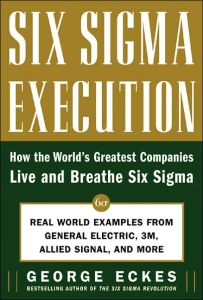Join getAbstract to access the summary!

Join getAbstract to access the summary!
George Eckes
Six Sigma Execution
How the World`s Greatest Companies Live and Breathe Six Sigma
McGraw-Hill, 2005
What's inside?
Six Sigma can improve your processes, culture and results, but first you have to believe and then you have to train.
Recommendation
The high priests of the Six Sigma movement tend to be analytical thinkers who relish a methodical, data-driven process that enhances productivity. George Eckes certainly fits this profile. Like any good consultant, he doesn’t tell you everything you ever wanted to know about Six Sigma; he leaves you wanting more. For example, the book’s treatment of “measurement dashboards” – the metrics used to assess the efficiency of a given process – is less than definitive. The strength of his book, however, is that Eckes actually lays out detailed case studies from his retreats and seminars, practically handing you an agenda for getting a Six Sigma project off the ground. You’ll feel you’ve been part of a Six Sigma initiative from its opening stages. After you read this book you may not know enough to be a Six Sigma champion, but getAbstract predicts that you’ll no longer be a novice.
Summary
About the Author
George Eckes is a consultant and Six Sigma expert with more than 20 years of experience. He also wrote The Six Sigma Revolution.





















Comment on this summary